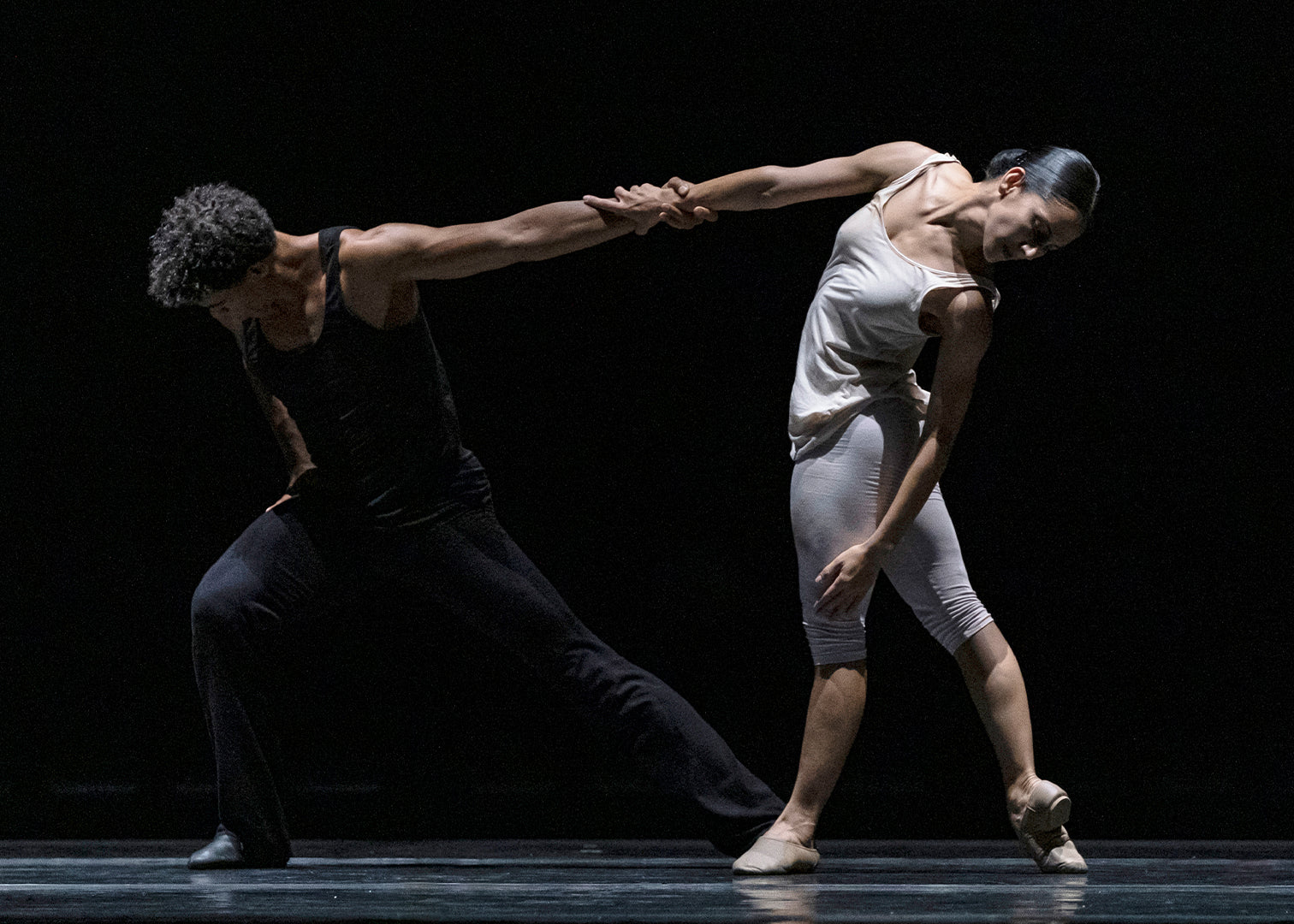With “Apollo,” Balanchine created one of the greatest roles for a male dancer—a role that commands a stellar bravura technique, lyrical subtlety and charismatic authority of execution. Only a handful of men were able to put a notable interpretive stamp on this part. Peter Martins was one of them: “Magnificent” and “absolutely godlike,” the New York Times described his performance of the title role.
“Apollo” happened to be the first ballet Martins performed with New York City Ballet. In 1967, he was asked by Balanchine to replace the injured Jacques D’Amboise during the company’s visit to the Edinburgh International Festival. He was just 20 years old and a soloist with the Royal Danish Ballet. Three years later, Martins joined NYCB as principal dancer.
Coming full circle, Martins danced in “Apollo” in the fall of 1983, opening the company’s first official season after Balanchine’s death. At that time he already assumed his new role as NYCB’s co-ballet master in chief, sharing the leadership responsibilities of the company with Jerome Robbins. He became the sole leader of NYCB in 1990.
As fate would have it, “Apollo” opened the NYCB winter season at Lincoln Center this January—the first season in more than 30 years without Peter Martins at the helm of the company. On January 1, 2018, after spending more than 50 years with New York City Ballet, Martins resigned from his position after allegations of physical and sexual harassment. (He denies accusations; the investigation is still ongoing.)
In spite of these trying times, it is business as usual at New York City Ballet.
On Saturday January 27, the company held its annual “Saturday at the Ballet with George” celebration to commemorate George Balanchine’s birthday. “Apollo” opened the first of two all-Balanchine programs, which also comprised “Mozartiana” and “Cortѐge Hongrois.”
In its reduced incarnation, “Apollo” has a pure-dance focus and is hardly the “Apollo” that Stravinsky and Balanchine created for Diaghilev’s Ballets Russes in 1928. In the late 1970s, Balanchine revised the ballet, omitting the most theatrical moments of the plot: the prologue, with depiction of Apollo’s birth, and his culminating ascend to Parnassus, with three muses in tow. Still, brimming with visually striking imagery and offering a wide interpretive range for the title role, the ever-fresh and spirited “Apollo” never ceases to fascinate.
On Saturday matinee, as Apollo, Adrian Danchig-Waring gave his character a thoroughly contemporary appeal. There was poise and nobility in his bearing—this young god was surely destined for divinity; yet there was an earthy sense of freedom and vitality in his dancing that painted the choreography with new modern colors, giving his Apollo a boy-next-door look.
Apollo’s beautiful muses shaped his sensibilities with attention, care, panache and a touch of humor. Indiana Woodward was exuberant and flirtatious as Calliope (the muse of poetry). Ashly Isaacs brought an appealing dramatic expressivity to the role of Polyhymnia (the muse of mime). As Terpsichore (the muse of dance), Apollo’s favorite muse, the luminous Tiler Peck aptly mixed elegance with playfulness, impressing the young god and the audience alike. Her sublime duet with Danchig-Waring was delivered with lush musicality and nuance.
The NYCB orchestra under baton of Andrew Litton played Stravinsky’s score with rich tone and vibrant sound, brining the revelatory expressiveness of the music to the fore.
If “Apollo” is the first surviving masterpiece by Balanchine, his “Mozartiana,” from 1981, is regarded as his final choreographic gem.
Tchaikovsky’s music—orchestral Suite No. 4, Op. 61—was very dear to Balanchine. He created at least four different versions of “Mozartiana” during his career, the first dating as early as 1933.
The final incarnation of the ballet was created specifically for Suzanne Farrell, Balanchine’s last and greatest muse. It’s a serene and poetic piece, with somber, even mournful, themes lacing the radiant and supremely delicate choreography.
“Balanchine at the age of seventy-seven had given us a vision of heaven as he interpreted it from Lord’s Prayer, “on earth as it is in heaven,” and it was a very beautiful place indeed,” wrote Farrell about “Mozartiana” in her biography Holding On to the Air. “It was because this ballet existed that I could survive the death of the man who made it.”
In the central ballerina role, Sara Mearns nailed every technical demand of the choreography; yet her performance came across as excessively exaggerated and forceful. The ballet’s opening movement, envisioned by Balanchine as a meditative prayer, should leave the view with a sense of tranquility and repose. Yet Mearns’s dancing was anything but peaceful and the atmosphere of the lyrical “Preghiera” was totally altered in her rendition.
Troy Schumacher sparkled in his solo in the vivacious “Gigue;” his dancing—theatrical, animated, and witty—was permeated with a flavor of Commedia Dell'Arte.
The stately Chase Finlay brought a welcome poise and loads of charisma to “Theme et Variations,” partnering Mearns with assurance and aplomb; and the life-affirming finale, which brought onstage the entire cast, ended this “Mozartiana” on a high note.
The program culminated with a cheerful performance of “Cortѐge Hongrois,” a piece that offers an irresistible mélange of classical ballet and character dancing. Choreographed in the style of Marius Petipa and set to Alexander Glazunov’s lilting music from “Raymonda,” this sunny ballet brims with ceremonial processions and lively dances for the sizable corps de ballet and features a kaleidoscope of dazzling solos and duets for the leading couples.
Ashley Bouder and Russell Janzen led the classical-style sections of the ballet with authority and élan. Bouder’s dancing was especially spirited and compelling. Yet it was Unity Phelan, in the central ballerina role of the character leads, who stole the audience’s hearts. Her cheery disposition, together with her flawless technique and clarity of her dancing, made the entire performance particularly joyous and memorable.









comments